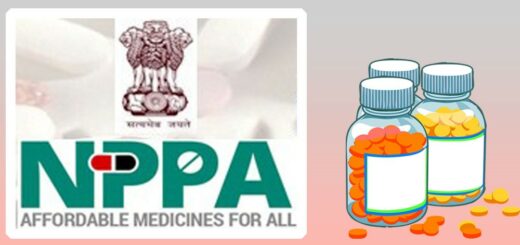National Current Affairs – UPSC/KAS Exams- 18th November 2019
Swachh Bharat: Urban areas require a different approach
Topic: Polity and Governance
In News: An urban area faces two major challenges in comparison with rural area, disposal of solid waste and sewerage/liquid waste. The need for a dedicated sewerage network is less in rural areas as the toilets are connected with in-house soak pits. Domestic waste in rural areas is also managed in a much better manner as it is segregated at the household level and a majority of it is used in the fields.
More on the Topic:
Urban Specific Challenges with respect to swachdha:
- The segregation of waste can either be at the source or at the landfill. Segregation at source is more economical. At the landfill, it is done by either using high-end segregation plants or manual conveyors.
- In most urban areas, disposal of solid waste is primarily the responsibility of municipalities. However, these municipalities are not equipped with the manpower, financial resources and technology for the task.
- Most of them are dependent upon the state governments for These municipalities do not have sufficient human resources in terms of engineers or sanitation staff to manage the waste. Landfill site management is very poor due to lack of technical know-how.
- The second challenge is to manage sewerage in urban areas. Merely constructing toilets cannot solve the problem as these areas require proper sewerage network. The soak pit system that works in rural areas cannot work in urban areas due to a space crunch and increasing population density.
- The job of laying the sewerage network is again distributed between the state’s public health engineering department and the municipalities.
Where SBM goes wrong in Urban Mission:
- If we look at strategy adopted by the Swachh Bharat Mission (Urban), its main focus is on the construction of individual household toilets, community toilets, public urinals and IEC activities.
- The funds earmarked for solid waste management are minimal. Similarly, there is limited provision of funds for laying the sewerage networks. The strategy used for Swachh Bharat Mission (Grameen) will not yield results in the urban mission.
- Adopting a piecemeal approach for constructing toilets and litter bins will not solve the systemic issue of waste disposal in cities. Unless we are able to lift the waste from the streets systematically, cleanliness will not have any meaning.
Way Ahead:
- There is a need for revamping the Swachh Bharat Mission (Urban) wherein the focus is on solid waste and sewer management.
- The ministry must ask the state governments to assess their capabilities in waste handling. Recurring funds must be provided for collection of waste and its disposal.
- A window may be given to municipalities for upgrading their capabilities to augment their revenue collection.
- Separate funds must be given for the development of landfill sites. Best possible practices for waste collection across key cities must be studied and emulated.
Source: Indian Express
Topic: International Affairs
In News: Bolivian President resigned recently and the forced resignation of Bolivian President Evo Morales has thrown the poorest country in South America into its biggest political crisis in 13 years.
More on the Topic:
- Morales is Bolivia’s first indigenous President. He came to power in 2006, riding South America’s so-called “pink tide”.
- He rose to the top office through left-wing unionism and presided over one of the most stable governments.
- But, cracks began to appear in his Movement for Socialism party when he sought a fourth consecutive term earlier in 2019.
Morale’s Achievements:
- On coming to power, Morales promised economic development and equitable wealth distribution.
- Under his fairly good track record, Bolivia has seen a drop in extreme poverty, from 33% of the population in 2006 to 15% in 2018.
- His government also stepped up public investments, opened more schools and health clinics.
- The economy has also seen a steady growth rate.
- Morales made some major political mistakes as well.
Wrong Doings By Morale:
- Primarily, Morales failed to bring up a second-rung leadership in the Movement for Socialism to whom he could pass the baton of his “21st century socialist revolution”.
- In 2016, his push to end presidential term limits through a referendum failed.
- He then said he accepted the verdict. But later, a constitutional court lifted the presidential term limits, allowing the President to seek re-election.
- This had got to be a concern to the Opposition, which claimed that the President’s electoral participation itself was unconstitutional.
- This was followed by allegations of electoral fraud, which further weakened his stature.
- Evo Morales was forced to resign as violent protesters insisted on Mr. Morales’s resignation, The police forces rebelled against the government and The Military generals forced the President to step down.
Present Scenario:
- All these problems destroyed the possibility of a peaceful transition.
- According to the Bolivian Constitution, if the President steps down, the Vice-President should take over.
- The heads of the Senate and chamber of deputies are the other leaders in the hierarchy who could assume acting presidency.
- But in the present case, all four officials, all Socialists, have resigned.
- This had left a vacuum, which the military could exploit.
- In this backdrop, senator Anez has declared herself the president without having a quorum in the parliament.
- More violence could be awaiting the country.
Source: Indian Express
Topic: Polity and Governance
In News: The Supreme Court has decided to refer the Sabarimala temple case to a larger 7-judge Bench. This reopens not only the debate on allowing women of menstruating age into the Ayyappa temple but the larger issue of whether any religion can bar women from entering places of worship.
More on the Topic:
- Since the Sabarimala verdict will essentially be heard afresh, the constitutional debate on gender equality will open up once again.
- The review gives the ‘devotees’ and the Sabarimala temple authorities who have battled the Supreme Court verdict a foot in the door to have the verdict potentially overturned.
About Doctrine of Essentiality:
- The doctrine of “essentiality” was invented by a seven-judge Bench of the Supreme Court in the ‘Shirur Mutt’ case in 1954.
- The court held that the term “religion” will cover all rituals and practices “integral” to a religion, and took upon itself the responsibility of determining the essential and non-essential practices of a religion.
- Five-judge Constitution Bench judgment in ‘Dr M Ismail Faruqui and Ors vs Union Of India and Ors’ (October 24, 1994), ruled that “A mosque is not an essential part of the practice of the religion of Islam and namaz (prayer) by Muslims can be offered anywhere, even in open.”
- In some cases Supreme Court have relied on religious texts to determine essentiality, in others on the empirical behavior of followers, and in yet others, based on whether the practice existed at the time the religion originated.
How has the doctrine been used in subsequent years?
- The ‘essentiality doctrine’ of the Supreme Court has been criticised by several constitutional experts.
- Scholars of constitutional law have argued that the essentiality/integrality doctrine has tended to lead the court into an area that is beyond its competence, and given judges the power to decide purely religious questions.
- As a result, over the years, courts have been inconsistent on this question, in some cases they have relied on religious texts to determine essentiality.
- In others it relied on the empirical behaviour of followers, and in yet others, based on whether the practice existed at the time the religion originated.
| Facts to Remember:
· The apex court in ‘Ratilal Panachand Gandhi vs The State of Bombay and Ors’ (March 18, 1954) acknowledged that “every person has a fundamental right to entertain such religious beliefs as may be approved by his judgment or conscience”. · The apex court has itself emphasised autonomy and choice in its Privacy (2017), 377 (2018), and Adultery (2018) judgments.
|
Source: Indian Express
Topic: Government Schemes
In News: Union Ministry for Health and Family Welfare (MoHFW) launched SAANS: ‘Social Awareness and Action to Neutralise Pneumonia Successfully’ campaign to reduce child mortality due to pneumonia.
More on the Topic:
- Pneumonia contributes to around 15% deaths of children under five years of age annually, therefore, a mass awareness campaign will also be launched about effective solutions for pneumonia prevention such as breast feeding, and age appropriate complementary feeding. immunization, good quality air etc.
Objectives of the scheme:
- To reduce child mortality due to pneumonia
- To mobilise people to protect children from pneumonia
- To train health personnel and other stakeholders to provide prioritised treatment to control the disease
Provisions of the Scheme:
- Under the campaign, a child suffering from pneumonia can be treated with Pre-referral dose of anti-biotic amoxicillin by Accredited Social Health Activist (ASHA) workers.
- Health and wellness centres will use Pulse Oximeter (a device to monitor oxygen saturation) to identify low oxygen levels in blood of a child, and if required, treat him by use of oxygen cylinders.
Source: Hindu
Topic: Reports and Indices
In News: The Water Quality Report was released by the Union Minister of Consumer Affairs. The report is in line with the Jal Jeevan Mission that was launched to provide clean and safe drinking water to all by 2024.
More on the Topic:
- The study was conducted by the BIS (Bureau of India Standards) to check on the quality of piped drinking water provided in the cities, especially in the state capitals. The cities were then ranked based on the report.
- The tests were conducted on 28 parameters such as Chemicals, Toxic substances, Organoleptic tests, Bacteriological tests and physical tests.
Key Highlights of the report:
- In Delhi, out of 11 samples, 10 failed to comply the standards of Indian Standards.
- The best performing cities where almost all the samples were up to the standard were Ranchi, Shimla, Bhubaneshwar, Amravati and Raipur.
- Chandigarh, Gandhinagar, Patna, Bengaluru, Jammu, Lucknow, Chennai and Dehradun in the list of cities where the tap water quality was found to be below par.
- The first-of-its-kind report has exposed the failure of water supplying agencies across cities to provide safe drinking water.
Source: Hindu
Topic: Infrastructure Development
In News: Union Defence Minister Rajnath Singh inaugurated the Sisseri River Bridge at Lower Dibang Valley in East Siang District of Arunachal Pradesh.
More on the Topic:
- The bridge will play an important role in the overall development of the area and will immensely contributes to the socio-economic development of the region.
- The Sisseri River bridge was constructed by Project Brahmank of Border Roads Organisation (BRO). BRO has four projects in Arunachal Pradesh namely Arunank, Vartak, Brahmank and Udayak to maintain and develop the difficult geographical terrain and strategically important area.
- This bridge will be a part of Trans Arunachal Highway and is also strategically important from a military viewpoint and moreover, infrastructural upgradation is necessary for the security of the North-East as well as the entire country.
Source: Hindu
Free Medical Scheme of Rajasthan
Topic: Government Schemes
In News: Rajasthan’s flagship free medicine scheme, launched in 2011-12, has once again secured the first rank from the National Health Mission.
More on the Topic:
- The State registered 94.59% of online free medicine distribution at counters in public health facilities and 84.76% use of the drugs and vaccine distribution management system at primary health centres.
- The scheme has 2 components,
- Free Medicines: To provide commonly-used essential medicines free of cost to patients visiting government healthcare institutions (introduced on 2nd October 2011), and
- Free Tests: To provide free tests (introduced on 7th April 2013).
- For the successful implementation of the same, Rajasthan Medical Services Corporation Limited (RMSCL) was incorporated as a Public Limited Company.
About the ranking:
- National Health Mission under its Free Drug Service Initiative, started giving rankings to the states, in order to encourage them to provide free drugs to their patients coming to public health facilities.
- The performance of the states was assessed by NHM on the basis of 10 parameters including: The stock of drugs, Value of drugs about to expire, and Effective compliance with the Drugs and Vaccine Distribution Management System (DVDMS), etc.
Model Mains Question: Discuss The Major Challenges Being Faced By The Healthcare System In India? What Steps Should Be Taken To Strengthen The Existing State Of Health Infrastructure In The Country?
Source: The Hindu



















